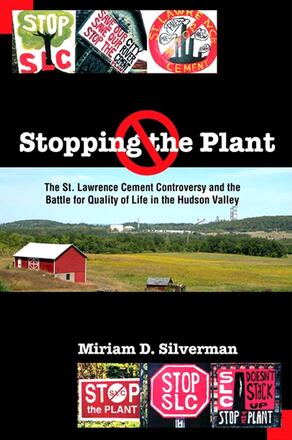
Stopping the Plant
The St. Lawrence Cement Controversy and the Battle for Quality of Life in the Hudson Valley
Alternative formats available from:
Detailed account of the controversy surrounding the building of a coal-fired cement factory in the Hudson Valley.
Description
When the St. Lawrence Cement Company proposed building a massive coal-powered cement plant near the banks of the Hudson River in the town of Greenport, New York, in 1999 it ignited a controversy that dominated the discussion of community development in the entire Hudson Valley region. Stopping the Plant is a fascinating and detailed chronicle of how the proposal fired the passions of many local citizens, spawned the creation of numerous activist groups, and over the next several years spread to become a raging dispute throughout the Northeast. Miriam D. Silverman provides a thorough and balanced exploration of the positions of both sides of this highly polarized dispute, while at the same time places the controversy within a greater historical and regional context. For anyone interested in community organizing, the potentials and difficulties of modern grassroots environmentalism, and, ultimately, the future of the environmental movement, Silverman emphasizes the significance of the decision by St. Lawrence Cement to withdraw its application in 2005.
Miriam D. Silverman is an independent scholar born and raised in New York City.
Reviews
"…this self-confessed environmentalist deserves credit for attempting to tell both sides of the story." — CHOICE
"There's more to this book than a tit-for-tat legal process. In readable detail, both sides are given an airing, which means you get a reliable road map to how the grass-roots groups, both local and national, were able to block a plant that made some persuasive arguments." — Times Herald-Record
"Anyone who thinks of home as a special place threatened by forces both distant and close at hand will find a profound connection to the people of Hudson as they struggled to define the soul of their community. We have Miriam Silverman to thank for that." — From the Foreword by Mark H. Lytle
"A vivid portrayal of citizens and environmental organizations joining together to win the first great fight for the Hudson in the twenty-first century, with important lessons for the coming struggle to save the 'landscape that defined America.'" — Frederic C. Rich, Chair, Board of Directors, Scenic Hudson
"This is a well-written account on an environmental conflict which, against long odds, citizens won. Stopping the Plant deserves wide readership, not least because the federal government is in retreat, which means that environmental protection will be done at the local and state levels or not at all. Miriam Silverman has pulled off the very difficult task of being evenhanded without losing her own voice. It is hard to fairly present views with which one disagrees, but she does this admirably. The result is a compelling and convincing analysis of how a powerful corporation, promising jobs and prosperity to hard-pressed communities, lost to a broad coalition that put forward a very different vision of what sort of future they wanted." — Jan E. Dizard, author of Going Wild: Hunting, Animal Rights, and the Contested Meaning of Nature
"Ms. Silverman's calm dissection of a passionate local debate not only helps us understand the worldviews that recently collided in the Hudson Valley, but also enables us to recognize the complexities of similar controversies throughout the United States. This book should be read by anyone in the Hudson Valley whose awareness of the proposed cement factory was limited to the 'Stop the Plant' signs—and by anyone interested in what happens when local and global interests clash." — Leon Botstein, President, Bard College